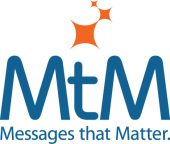You need a strong foundation to effectively market your B2B software or technology product. That foundation is your message strategy. Everything you do in marketing should be built upon it.
By using your message strategy in every aspect of your marketing, public relations and analyst relations, you significantly increase your chances telling a compelling story and claiming a position in your market. That’s because consistency and repetition are the keys to successful positioning – that mental space in your target audience’s mind that you can own with an idea that has compelling meaning to the recipient.
You go after that mental space with a positioning statement that offers a solution to your target audience’s most pressing problem. Here are some examples of positioning statements:
- FRx Financial Reporter makes it easy to gain immediate control of your financial reporting process.
- Messages that Matter teaches a business process for positioning that sets you apart from the competition.
- Kit Software helps maximize the value of your commodity trading operations.
Your positioning statement becomes the central theme for almost all your marketing communications. Which means it needs to adapt to just about anything you do in marketing.
“Is a positioning statement useable?” is one of the ways to test it before going public with a new positioning statement. Even if your positioning statement is important – it solves a real problem – and unique, if it can’t easily adapt to various marketing efforts, you need to find one that does.
How to test your positioning statement for usability
To test, I suggest creating the following sample marketing activities:
- Short descriptions of varying lengths – 75, 125 and 200 words
- Press release
- First page of a product overview
- First few slides of a PowerPoint presentation adapted to three different personas
Of course, you can’t write anything in detail without support points. The reaction you want to your positioning statement is “that’s interesting. Tell me more. How do you do it?” Your support points unfold your story in more detail and substantiate the claim you made in your positioning statement.
Together, your positioning statement and supports points make up your message strategy. Support points provide the reason to believe your positioning statement. Most importantly, support points must support, not compete with the positioning statement. If a support point is as compelling as your positioning statement, it competes for mind share, and you end up with no position. Read my blog about why multi-claim positioning statements don’t work.
Support points drill down to a demo
Support points also provide a structure for product, solution or technology demonstrations. While the positioning statement articulates a high-level benefit, the claims made in the support points should be readily demonstrable. That is, in just a few steps, you should be able to show how the offering delivers relevant capabilities.
Support points can also address concerns of a secondary buyer. For example, a software product that solves the CFO’s problem might have a support point about the enabling technology that solves the problem. The enabling technology is what the technical folks care about, and the support point sets the stage for a technical discussion or creation of marketing collateral for the CIO.
By creating a message strategy, you eliminate the first question that comes up when a new marketing piece is in the planning stage – “What should we write about?” Instead, the question is, “How do we execute the message strategy?”
Your message strategy makes it easier to deliver the same message across all marketing media including web sites, brochures, advertisements and presentations to investors, industry analysts and prospects. Think of your message strategy as a recipe for all marketing communication. Follow the recipe, adjusting it for the audience and situation, and you get a good story, one that you can easily repeat over and over until your target audience listens and takes action.
Repetition is the key to successful positioning
Why is repetition so important in claiming a position? Repetition – that is, repeatedly exposing the target audience to executions of the same positioning concept over an extended period of time – is perhaps the most important factor in claiming a position and giving it staying power.
That’s one of many takeaways from a book every B2B marketer should read, “Neuromarketing. Understanding the “Buy Buttons” in Your Customer’s Brain.” According to one of the authors, Patrick S. Renvoise, here’s why you make your positioning statement more memorable by repeating it over and over:
“Even the repetition of a few simple words sends a strong signal to the reptilian brain (which makes decisions), prompting it to note, ‘I should remember that.’ Repeat your claims so that the reptilian brain will bookmark them as important…
“The most solid and logical message, though it may interest your prospect, will not trigger a buying decision unless the primitive, reptilian brain understands and remembers it.”
Unfortunately, most of the B2B software companies I follow rarely use their positioning statement more than once on their website and almost never in all the rest of their marketing communications. They must not have a message strategy, and without it as the foundation, their marketing falls apart.
